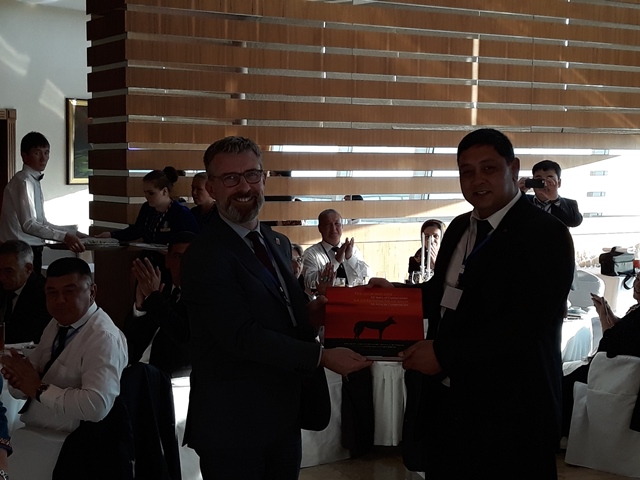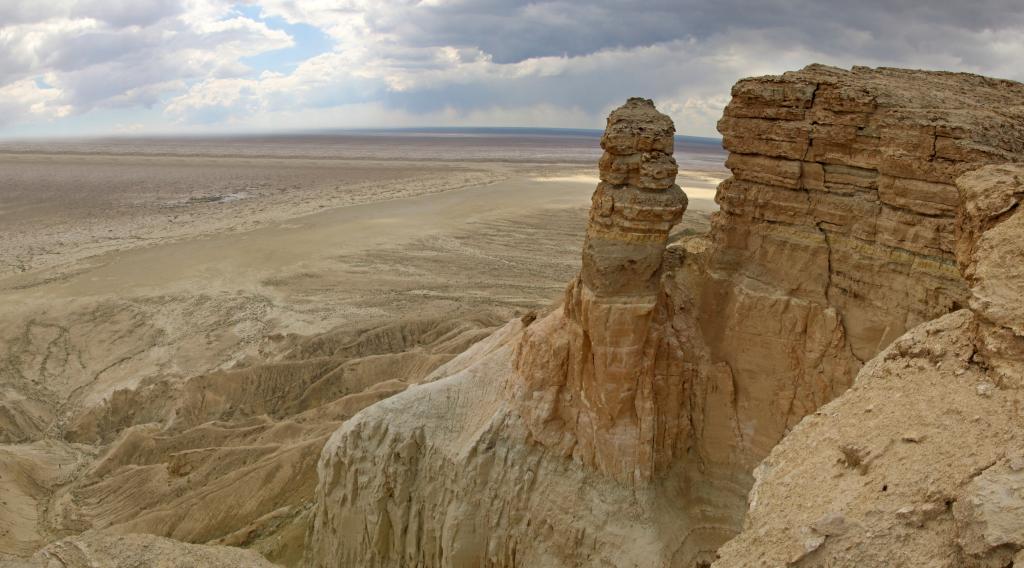Celebrating 50 years of the Society of Nature Protection of Turkmenistan
The establishment of the Society of Nature Protection of Turkmenistan fifty years ago marked the beginning of the modern era of nature protection in the country. To celebrate its anniversary, the Society organised a conference in Ashgabat on 11 and 12 October 2018, marking at the same time the 40th jubilee of the XIV General Assembly of IUCN in Ashgabat and the 70th anniversary of IUCN.
Today, the Society unites 10 national environmental organisations, has 200,000 members and 120 permanent staff. Its relevance for conservation activities and policy in the country is significant. Consequently, the event was of major importance in gathering key experts and organisations working on nature conservation in Turkmenistan, Central Asia, and internationally. Participants included representatives of the Ministry of Foreign Affairs, the State Committee for Environmental Protection and Land Resources, the Academy of Sciences of Turkmenistan, and other national institutions as well as the IUCN WCPA and IUCN SSC Commissions, IUCN ECARO, Michael Succow Foundation, RSPB and WWF Russia. “We are grateful for the presence and contributions of the international experts, and we look forward to working together on nature conservation in Turkmenistan,” said Serdar Allekov, Chairman of the Society of Nature Protection of Turkmenistan, the only IUCN Member in the country, when opening the conference.
The conference focus was on nationally designated protected areas, conservation of threatened species, and land use and management. Land and water management initiatives were introduced, such as the artificial Golden Age Lake as a means to make the country’s desert landscape more arable and liveable. International experts provided background on protected area systems, on the status of key species populations in Turkmenistan (e.g. Asiatic Wild Ass, Persian Leopard, Sociable Lapwing, Markhor) and on the applicability of conservation approaches used in other Asian contexts (e.g. for the Snow Leopard).
The conference also served to present a number of key regional conservation initiatives relevant to the country, including the ongoing development of the Central Asia World Heritage Thematic Study, the Central Asian Desert Initiative, and IUCN’s nascent ‘Save Our Species’ initiative in Central Asia. Talking about the importance of characteristic regional ecosystems Prof. Michael Succow explained that intact Central Asian desert landscapes with saxaul vegetation serve as one of the major carbon sink ecosystems after forests, mangroves and peatland.
The conference was a successful gathering that provided a renewed impetus for nature conservation in the country. “Turkmenistan’s rich biodiversity is of regional importance and is in need of strong conservation action. This conference gave us an overview of the conservation situation in Turkmenistan and the priorities as perceived by the national experts and authorities,” concluded Boris Erg, Director of the IUCN Regional Office for Eastern Europe and Central Asia, reiterating IUCN’s interest to keep engaging with experts on the conservation of Turkmenistan’s unique natural values.
Following the conference, a half-day side-meeting was organised between IUCN, the Society of Nature Protection of Turkmenistan, the National Institute of Deserts, Flora and Fauna, the Michael Succow Foundation and relevant national experts to present recent progress with the development of the World Heritage Thematic Study for Central Asia and get updated on ongoing activities on World Heritage nomination in the country. The meeting resulted in an agreement on next steps in the process.





